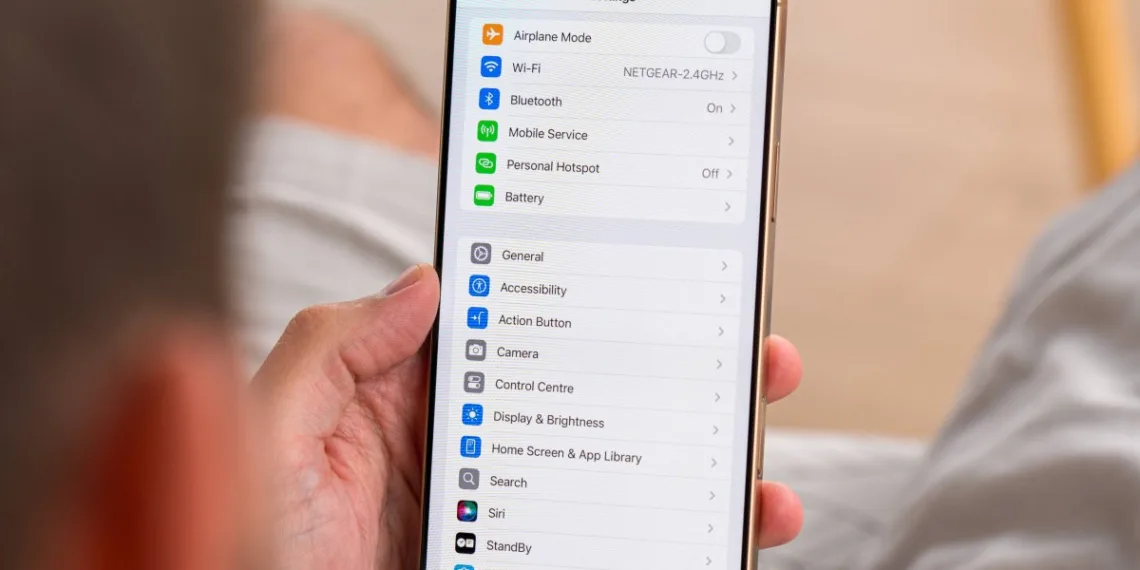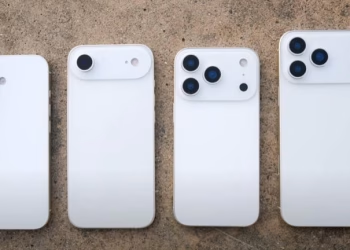Apple is set to revolutionize its display game with the iPhone 17 series. According to recent leaks, all iPhone 17 models—including the standard and the new iPhone 17 Air—will boast Samsung’s top-tier M14 OLED panels. This marks the first time Apple will equip both Pro and non-Pro models with the same premium display technology.
Table of Contents
What Makes the M14 OLED Special?
Samsung’s M14 panel features advanced light-emitting layers, along with prime and common layers that enhance individual pixel performance. Compared to the M13 panels used in the iPhone 16 Pro and Pro Max, the M14 offers up to 30% higher brightness and an extended lifespan.
The M14 OLED panel is built using Samsung’s latest display architecture, designed to deliver superior contrast ratios, vibrant colors, and enhanced power efficiency. This panel consists of multiple layers, including:
- Light-Emitting Layers: These are responsible for the actual light production in the OLED display. Samsung’s advanced materials increase efficiency and brightness while reducing power consumption.
- Prime Layers: These layers optimize color accuracy and sharpness, ensuring that users experience true-to-life visuals, whether watching videos, playing games, or browsing photos.
- Common Layers: These layers maintain uniformity across the display, eliminating any inconsistencies in color or brightness across the screen.
The M14 panel’s efficiency also means users can expect longer battery life without compromising on display quality. This advancement is particularly significant for users who rely heavily on their smartphones for daily tasks, entertainment, and work.

Performance Boost: How M14 Compares to Previous Panels
Samsung’s M14 OLED outperforms its predecessor, the M13 panel, used in the iPhone 16 Pro models. Key improvements include:
- Brightness: The M14 panel offers up to 30% higher peak brightness, ensuring better visibility under direct sunlight and more immersive HDR content.
- Longevity: The new material composition extends the panel’s lifespan, reducing the chances of burn-in and color degradation over time.
- Power Efficiency: Enhanced energy efficiency means less battery drain, allowing users to enjoy longer screen-on times without frequent recharging.
These improvements not only enhance the user experience but also contribute to Apple’s ongoing efforts to make its devices more environmentally friendly by reducing energy consumption.
Pro Features Still Exclusive
While the display quality will now be uniform, some Pro-exclusive features like ProMotion’s 120Hz refresh rate might remain locked for the standard models. Apple has traditionally reserved higher refresh rates for its Pro models to differentiate them from the standard lineup.
However, the inclusion of the M14 panel across all models ensures that even users opting for non-Pro versions will enjoy vibrant colors, deep blacks, and crisp visuals. This move is particularly beneficial for users who prioritize display quality but don’t necessarily need Pro-specific features like advanced camera systems or LiDAR scanners.
Impact on User Experience
For everyday users, the M14 OLED panel translates to a more enjoyable and immersive experience across various activities:
- Media Consumption: Watching movies, TV shows, and videos will be more immersive, with richer colors and better contrast.
- Gaming: Mobile gamers will appreciate the enhanced responsiveness, smoother visuals, and improved battery life.
- Photography and Editing: Users who enjoy editing photos and videos on their phones will benefit from more accurate color representation.
- Reading and Browsing: Even simple tasks like reading articles or browsing social media will feel more enjoyable with sharper text and vibrant images.
Environmental and Economic Impact
Apple’s decision to standardize premium displays across its lineup also has broader implications:
- Sustainability: The M14 panel’s energy efficiency aligns with Apple’s environmental goals, reducing the overall carbon footprint of its devices.
- Cost Efficiency: While the initial cost of implementing M14 panels across all models might be higher, the long-term benefits include reduced warranty claims and improved customer satisfaction.
- Market Competition: This move puts pressure on competitors to offer similar high-quality displays across their entire smartphone lineups.
Future Prospects and Industry Impact
Apple’s adoption of Samsung’s M14 OLED technology could set a new industry standard. Other smartphone manufacturers may follow suit, pushing display technology to new heights. Additionally, advancements in OLED technology could lead to further innovations, such as foldable displays and microLED integration.
Conclusion
Apple’s move to standardize premium displays across the iPhone 17 lineup ensures a more consistent user experience—without pushing every user into the Pro price bracket. The inclusion of Samsung’s M14 OLED panels across all models signifies a significant leap in display technology, enhancing brightness, longevity, and power efficiency.
With this upgrade, the iPhone 17 series is set to deliver an unparalleled visual experience, reinforcing Apple’s commitment to quality and innovation. Expect the iPhone 17 to set a new benchmark for smartphone displays when it launches.








